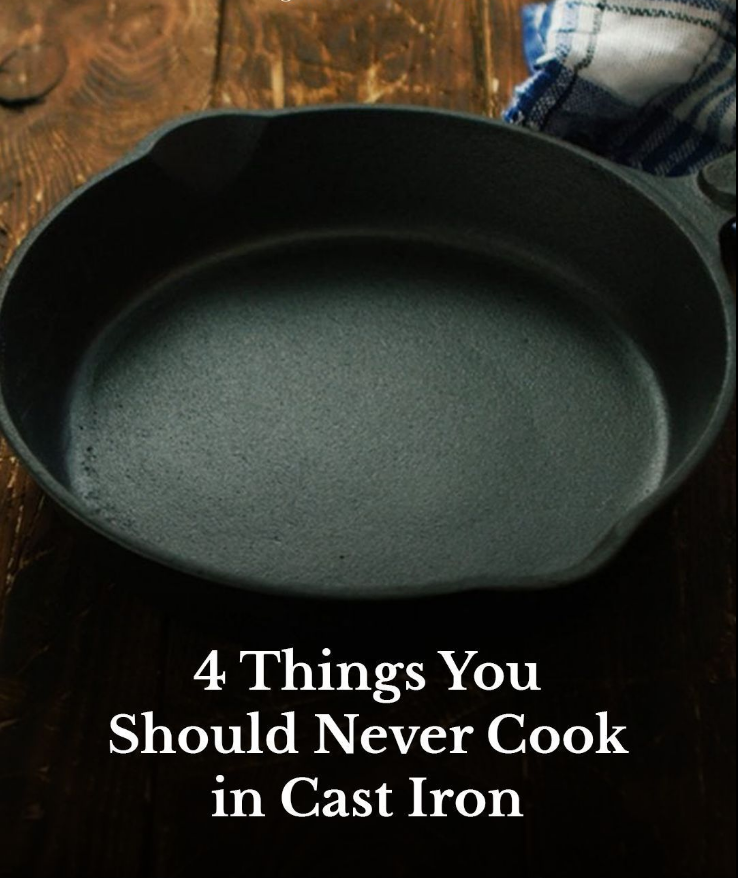4 tips you should know

1. Acidic Foods (Like Tomatoes, Lemon Sauces, Vinegar-Based Dishes)
Why to avoid:
Cast iron reacts with high-acid ingredients. When you cook something very acidic — like tomato sauce, wine reductions, or anything citrus-based — the acid can strip the seasoning (the protective oil layer) off the pan. This can:
- Leave behind a metallic taste in your food
- Damage your skillet’s finish
- Cause discoloration in light-colored sauces
Exception:
A well-seasoned cast iron skillet that’s been used and maintained over many months (or years) may handle short bursts of acidic cooking. But as a rule, avoid long simmers or frequent acid-based recipes.
2. Sticky or Delicate Fish (Like Tilapia or Flounder)
Why to avoid:
Cast iron pans are not naturally non-stick (unless very well seasoned), and flaky, tender fish tends to stick aggressively to the surface. This leads to:
- Torn fish pieces
- Difficult cleaning afterward
- Loss of flavor and texture
Better option:
Use a non-stick pan or stainless steel skillet with oil for cooking delicate fish. Cast iron works better for meatier fish like salmon or tuna that can withstand a sear.
3. Scrambled Eggs (When Skillet Is Not Perfectly Seasoned)
Why to avoid:
Eggs are notorious for clinging to imperfect cast iron surfaces. Unless your pan has a glass-smooth seasoning, you may run into:
- Eggs sticking and burning
- A frustrating cleanup
- The risk of scraping off seasoning while trying to clean
Tip:
If you’re confident your skillet is seasoned well enough that an egg can glide across the surface, go ahead. Otherwise, a non-stick skillet is safer.
4. Dishes That Simmer for Hours with Liquid (Like Soups or Braised Meals)
Why to avoid:
Long cooking times with liquid (especially acidic liquid) can break down the seasoning layer and promote rust formation. Cast iron is excellent for quick searing or baking, but for long-simmering:
- It may leach iron into the food (in excessive amounts)
- It may begin to rust if not dried and re-seasoned properly
- The skillet could become sticky and patchy over time
Use instead:
A Dutch oven (enameled cast iron) or stainless steel pot is better suited for soups, stews, and braises.
✅ Bonus Tip: What You Should Cook in Cast Iron
- Steaks, burgers, and pork chops (for a great sear)
- Cornbread, biscuits, and deep-dish pizza (cast iron retains heat beautifully)
- Roasted vegetables or skillet potatoes
- Fajitas or stir-fries (as long as they’re not soaked in sauce)